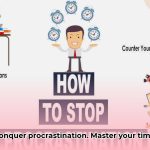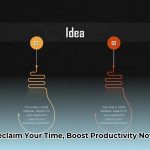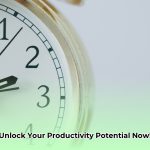Let’s face it, mornings with ADHD can often feel like a chaotic battleground. You’re constantly struggling to get organized and ready for the day. What if there was a way to transform those mornings into calmer and more productive experiences with practical, actionable advice? This guide is designed to equip you with simple strategies for easier mornings, emphasize the game-changing impact of preparing the night before, and help you build a personalized morning routine tailored to your unique needs. We’ll cover everything from conquering procrastination to strategically managing medication. Ready to ditch the morning mayhem and feel more in control? Let’s dive in! For more time management tips, check out these helpful strategies.
ADHD Morning Routine: Conquer Your Mornings, Own Your Day
Mornings can present significant hurdles for individuals with ADHD. A well-designed morning routine can be a powerful tool, transforming potentially chaotic starts into focused, productive days. This isn’t about adhering to rigid schedules; it’s about creating a personalized system that works for you and addresses your specific executive function challenges. It’s about finding ways to work with your brain, not against it.
Understanding Your ADHD Brain: Personalization is Key
ADHD is a highly individual experience, not a monolithic condition and emotional regulation. Some individuals primarily struggle with inattention, others with hyperactivity and impulsivity, and many experience a combination of both. Knowing your own ADHD presentation is crucial for designing an effective morning routine and optimizing time management. Do you find yourself easily distracted, grappling with rejection sensitive dysphoria, or struggling to sit still? Understanding your specific ADHD-related challenges allows you to tailor your approach effectively. There’s no universally “right” way – only the way that’s right for you, your unique circadian rhythm, and your working memory capacity.
Evening Prep: Setting the Stage for a Successful Morning
Think of your evening routine as the cornerstone upon which your successful morning is built. It’s all about proactive preparation, strategically setting things up so that your brain doesn’t have to work overtime in the morning. Lay out your clothes for the next day, pack your bag, and prepare as much of your breakfast as possible. These seemingly small steps can massively reduce the mental load in the morning, minimizing decision fatigue – a significant obstacle for many adults with ADHD. You’re essentially giving your future self a valuable gift: a less stressful and more manageable start to the day. This proactive approach helps create a sense of order and control right from the moment you wake up.
Crafting Your Personalized ADHD Morning Routine: Experiment, Adapt, and Refine
Now comes the most engaging part: designing the perfect morning routine specifically for you. There’s no magic formula or one-size-fits-all solution; it’s all about ongoing experimentation, adaptation, and continuous refinement. Carefully consider what works best for you, taking into account your individual time blindness tendencies and your unique task initiation struggles.
Step-by-Step (with options!):
- Wake-Up Ritual (Gentle Start): Commit to finding a consistent wake-up time – even if you’re not naturally a morning person, consistency is key. This helps regulate your body’s natural clock and sets a more predictable rhythm. Experiment with waking up slightly earlier if that approach resonates with you and supports your overall well-being. Consider using a sunrise alarm clock to mimic natural light and ease you into wakefulness.
- Movement (Get Your Blood Flowing): Intentionally incorporate some form of movement into your morning: a brisk walk outdoors, some invigorating stretches, a quick dance to your favorite music, or a more structured light exercise routine. Physical activity has been shown to boost focus and energy levels, essentially restarting your brain and preparing you for the day ahead. Even just five minutes of movement can make a significant difference in reducing sensory overload and improving cognitive function.
- Mindful Moments (Optional): If mindfulness practices appeal to you and align with your preferences, try incorporating a short meditation session or a few minutes of deep breathing exercises into your morning. This can help center you, calm your mind, and improve focus. However, if mindfulness isn’t your thing or feels forced, don’t hesitate to skip it! Focus on integrating elements into your routine that genuinely resonate with you. The ultimate goal is to cultivate a sense of calm and groundedness as you start the day, not to introduce additional stress or pressure.
- Hydration & Fuel (Nourish Your Body and Brain): Prioritize drinking a glass of water first thing in the morning to rehydrate your body after sleep. Follow that with a nutritious and balanced breakfast that includes protein, healthy fats, and complex carbohydrates. This combination provides sustained energy, prevents mid-morning crashes, and supports optimal cognitive function.
- Prioritize Tasks (Focus on What Truly Matters): Before diving into your emails or other distractions, take a few minutes to identify three crucial tasks you want to accomplish for the day and tackle them first thing. This strategic approach ensures that you address the most important things, even if the rest of the day veers off course or becomes a bit chaotic. Sometimes, simply accomplishing those top three priorities is a huge win for improving working memory and overall productivity.
Incorporating Essential Strategies: Tools to Help You Thrive
Several evidence-based strategies can significantly improve the effectiveness of your ADHD morning routine and help you manage emotional dysregulation.
- Visual Aids (See It, Do It): Leverage the power of checklists and timers to stay on track. Write everything down! Visual reminders minimize the chance of forgetting crucial steps or getting sidetracked. Experiment with different formats, such as paper checklists, digital apps, or Kanban boards, to find one that intuitively works for you.
- Technology (Your Digital Ally – Use Wisely): Strategically utilize technology and apps for reminders, timers, task management, and focus enhancement. But be mindful of the potential for distraction: technology should be a helpful tool, not a hindrance. Consider using website blockers or app timers to minimize the temptation to get lost in social media or other time-wasting activities.
- Medication Timing (Work with Your Doctor): If you take medication for ADHD, consult your doctor or psychiatrist to determine the optimal timing for your specific needs and medication type. The precise timing of your medication can significantly impact its effectiveness, reduce brain fog, and improve your overall focus and concentration throughout the morning and beyond.
Troubleshooting and Adaptation: It’s a Journey, Not a Race
Life is inherently unpredictable, and unexpected setbacks are an inevitable part of the journey. Your ADHD morning routine should be designed to be adaptable and flexible, not rigid or inflexible. Don’t get discouraged by an occasional missed day or a minor disruption; simply adjust your approach and keep moving forward. Consistency is undoubtedly vital for establishing a routine, but perfection is not necessary or attainable. Embrace small wins, celebrate your progress along the way, and focus on making sustainable improvements to your daily life.
Sample Routines: Find What Fits Your Style
Here are several adaptable examples to spark your creativity and illustrate different approaches – feel free to adapt them to your individual needs, preferences, and lifestyle:
| Routine Type | Description | Example |
|---|---|---|
| Quick Start | Minimal steps, maximum efficiency; ideal for those who thrive on a fast-paced, focused approach and need to get out the door quickly. | Wake, hydrate, quick stretch, grab pre-prepared breakfast & go. Focus on tackling the top three tasks immediately upon arrival at work or school. |
| Mindful Morning | Slower, more deliberate pace, prioritizing self-care, stress reduction, and intentionality. | Wake, meditation/deep breaths, gentle yoga or stretching, nourishing breakfast enjoyed mindfully, review and prioritize top three tasks with intention. |
| Structured Start | Heavily relies on visual cues, timers, and external prompts to maintain focus and stay on track. | Wake to a specific alarm, immediately consult visual schedule/checklist, complete tasks in a predetermined order using timers, reward self upon completion of each. |
Remember that your personal ADHD morning routine is a work in progress – a continuous journey of self-discovery, experimentation, and ongoing adjustment. Be kind and compassionate to yourself throughout the process, experiment with different approaches until you find what truly resonates, and celebrate your progress along the way. Small, consistent steps can lead to significant and lasting improvements in your daily life, productivity, and overall well-being. A critical element to any succesful routine is to remember that How to adapt ADHD morning routines based on inattentive vs. hyperactive presentations requires personalization.
How to adapt ADHD morning routines based on inattentive vs. hyperactive presentations
First and foremost, it’s vital to gain a clear understanding of your predominant ADHD presentation. Are you primarily inattentive, primarily hyperactive-impulsive, or do you experience a combined presentation with significant elements of both? Furthermore, consider whether you have underlying sensory processing sensitivities or any co-occurring conditions, such as anxiety or depression, that may further influence your morning experience. This nuanced self-awareness is key to designing a successful routine to combat your individual struggles and sensory overload.
Inattentive ADHD often involves persistent difficulty focusing attention, staying organized, following through on tasks, and remembering instructions. Hyperactive-impulsive ADHD is characterized by excessive restlessness, impulsivity, difficulty sitting still or waiting one’s turn, and a tendency to interrupt others. A combined presentation encompasses significant elements of both inattention and hyperactivity-impulsivity, potentially impacting your emotional regulation and overall functioning.
Knowing your dominant traits helps you anticipate your unique morning challenges and proactively plan accordingly. Someone with predominantly inattentive ADHD might benefit most from a highly structured and predictable routine with minimal distractions to effectively combat inattention and promote focus. Conversely, someone with predominantly hyperactive-impulsive ADHD might need a routine that incorporates ample opportunities for physical activity, movement breaks, and sensory stimulation to channel excess energy and reduce restlessness.
Evening Prep: Setting Yourself Up for Success
Think of your evening routine as the essential foundation of your morning success and a valuable tool for improving time management skills and combating impulsivity. It’s the time to proactively lay the groundwork for a smoother, more manageable start to the day.
- Outfit Selection: Make the conscious decision to choose your clothes for the next day the night before and lay them out neatly. This seemingly small action can eliminate a significant decision point in the morning, reducing decision fatigue and saving valuable time and mental energy.
- Breakfast Prep: Whenever possible, prepare breakfast components ahead of time. Chop fruits and vegetables, measure out ingredients for overnight oats, or assemble a ready-to-go breakfast smoothie packet. Having these items prepped and readily accessible can be a true lifesaver on busy mornings.
- Bag Packing: Pack your bags – whether it’s your work bag, gym bag, school bag, or diaper bag – the evening before. This proactive step eliminates the frantic morning scramble to gather essential items, reducing stress and ensuring that you don’t forget anything important.
- Visual Schedule: Consider creating a simple visual schedule for the next day to combat task paralysis and promote a sense of structure and predictability. This is particularly useful for those with inattentive ADHD, as it provides a clear roadmap for the morning and reduces the likelihood of feeling overwhelmed.
Crafting Your Personalized Morning Routine
Designing your personalized morning routine is an iterative process of experimentation, observation, and refinement. Don’t aim for perfection or get discouraged by setbacks; instead, focus on making incremental progress and adapting your routine to meet your evolving needs.
- Start Small: Begin by incorporating just a few key tasks into your morning routine. Don’t try to overhaul your entire morning at once, as this can be overwhelming and counterproductive.
- Prioritize: Identify your most important morning tasks – the ones that, if completed, will set you up for a successful day emotionally. Focus on prioritizing those tasks first.
- Time Blocking: Allocate specific time slots for each activity in your morning routine. Use a timer or alarm to stay on track and avoid getting sidetracked. This technique is particularly helpful for both inattentive and hyperactive presentations, as it reduces decision fatigue and provides a clear structure.
- Habit Stacking: Utilize the strategy of habit stacking by linking new habits to existing ones. For example, brush your teeth, then make your bed, then prepare breakfast. By associating new tasks with established routines, you can increase the likelihood of remembering and consistently performing them.
- Mindfulness Moments: Intentionally incorporate brief mindfulness or meditation exercises into your morning routine. This can help you manage stress and anxiety, improve focus and attention, and cultivate a sense of calm and well-being before the day begins.
Incorporating Key Strategies
Several crucial strategies can significantly enhance the efficacy of your ADHD morning routine:
- Visual Aids: Strategically utilize visual aids, such as checklists, timers, visual schedules, and sticky notes, to help you stay organized, remember tasks, and manage your time effectively.
- Movement: Make a conscious effort to incorporate physical activity into your morning, even if it’s just a short walk, some stretches, or a quick dance. Movement can boost energy levels, improve focus, and reduce restlessness, making it especially beneficial for hyperactive-impulsive ADHD.
- Medication Timing: If you take medication for ADHD, work with your doctor to establish a consistent and optimal time to take it each morning. Consistency in medication timing can significantly improve its effectiveness throughout the day.
- Technology: Selectively utilize technology to support your morning routine, such as apps for reminders, timers, habit tracking, and focus enhancement.
Troubleshooting and Adaptation
Remember, setbacks are inevitable, and it’s essential to be kind and compassionate to yourself when they occur. Don’t view setbacks as failures; instead, see them as opportunities to learn, adapt, and refine your approach.
- Unexpected Delays: Build in buffer time into your morning routine to account for unexpected delays, interruptions, or executive dysfunction challenges. Having a little extra time can reduce stress and prevent you from feeling rushed.
- Routine Changes: Be flexible and willing to adapt your routine to accommodate changes in your schedule, travel, or other life circumstances.
- Plateau: If you hit a plateau or find that your routine is no longer as effective as it once was, take the time to re-evaluate and identify areas that may need adjustment or elimination.
ADHD Evening Preparation Strategies for a Smooth Morning
ADHD Evening Preparation Strategies for a Smooth Morning are fundamental for setting the stage for a calm and productive day and effectively combating executive function challenges.
Understanding Your ADHD Brain in the Morning
ADHD presents differently in everyone, with unique patterns of strengths, challenges, and individual sensory processing sensitivities. Do you struggle most with maintaining focus, controlling impulsivity, initiating tasks, or managing your emotions? Recognizing your specific challenges is the first step toward designing a routine that works with your brain, rather than against it, and improves time management skills. Remember that a morning routine isn’t a rigid schedule; it’s a flexible framework that you can adapt to meet your changing needs.
Evening Prep: Setting Yourself Up for Success
Think of your evening routine as the essential foundation for a smooth and successful morning, significantly impacting emotional regulation and reducing stress.
- Outfit Choice: Take a few minutes each evening to choose your outfit for the next day and lay it out neatly. This simple act can eliminate decision fatigue in the morning and save valuable time and mental energy.
- Bag Packing: Pack your workbag, gym bag, lunch bag, or kids’ backpacks the evening prior. This proactive step avoids the frantic morning rush to gather essential items and ensures that you don’t forget anything important.
- Breakfast Prep: Prepare as much of your breakfast as possible ahead of time. Assembling overnight oats, chopping fruits and vegetables, or preparing a breakfast smoothie can save precious time in the morning.
- Medication: If you take medication for ADHD, have it readily accessible and prepared to take in the morning. This ensures that you don’t forget it amidst the morning chaos and that you can take it at the optimal time.
Crafting Your Personalized Morning Routine
Design a morning routine that is tailored to your unique needs, preferences, and goals, with a strong emphasis on developing emotional regulation skills.
- Identify Your Non-Negotiables: Identify three non-negotiable tasks that MUST be completed each morning to set yourself up for success. These could include taking medication, eating breakfast, exercising, or spending a few minutes in mindfulness.
- Time Blocking: Allocate specific time slots for each activity in your routine, and use a timer to stay on track.
- Prioritize: Prioritize your most challenging tasks and schedule them early in your day, while your energy levels are typically higher.
- Build-in Rewards: Schedule small rewards or positive reinforcement for completing tasks, keeping you motivated and engaged.
- Track Progress: Use a checklist, habit tracker app, or other visual tool to track your progress and reinforce your accomplishments, improving working memory challenges.
Incorporating Essential Strategies
- Visual Cues: Rely on visual aids, such as checklists, timers, visual schedules, or sticky notes, to serve as reminders and help you stay organized and focused, specifically addressing working memory challenges.
- Movement: Start your day with some form of exercise or stretching, as ADHD-friendly physical activity can significantly increase brain function, improve mood, and enhance sensory processing.
- Mindfulness: Incorporate a few minutes of meditation, deep breathing exercises, or other mindfulness practices to improve focus, reduce overstimulation, and promote a sense of calm and well-being.
- Technology: Explore apps and digital tools designed to support ADHD, such as habit trackers, to-do lists, calendar apps, or website blockers.
Adapting and Troubleshooting
Routines aren’t static; they evolve over time to meet your changing needs and address ongoing executive functioning struggles. What works effectively today might not work as well tomorrow. Be prepared for occasional setbacks, and remember that it’s okay to make adjustments as needed. Don’t get discouraged if you miss a day or two – just gently get back on track and recommit to your routine.
Example Morning Routines
| Routine Type | Description |
|---|---|
| Quick Start | Focus on completing essential tasks (getting dressed, eating breakfast, leaving for work or school) as efficiently and simply as possible. |
| Mindful Morning | Prioritize self-care activities (meditation, journaling, stretching) before diving into more demanding tasks or responsibilities. |
[Honestly ADHD: The ADHD-Friendly Morning Routine (free printable checklist)] (https://honestlyadhd.com/adhd-and-morning-routines/)
Optimizing ADHD Medication Timing for Improved Morning Routine
Optimizing ADHD medication timing is absolutely vital for achieving consistent effectiveness and maximizing your ability to focus, manage impulsivity, and initiate tasks throughout the day, especially when struggling with task initiation.
Understanding Your Unique ADHD
ADHD manifests in diverse ways, and it’s crucial to understand your own individual presentation, including whether you are primarily inattentive, primarily hyperactive-impulsive, or experience a combination of both, impacting your sensory overload and emotional regulation. Knowing your predominant presentation helps you tailor your routine to address your specific challenges and capitalize on your strengths for task paralysis. For example, someone with predominantly hyperactivity might need more structured activities to channel their energy effectively; while someone who is primarily inattentive might benefit more from implementing gentler, more gradual strategies to ease into the day and improve focus. This personalized self-awareness is the foundation for developing an effective and sustainable routine.
Evening Prep: Setting Yourself Up for Success
Think of your evening routine as your secret weapon for ensuring a smoother, more focused, and productive morning. Preparing the night before is not merely about convenience; it’s about strategically minimizing the number of decisions you have to make when your brain is still waking up and less capable of handling complex cognitive tasks, and improves time management. Lay out your clothes, pack your bag, gather your work materials, and prepare your breakfast ingredients. This proactive approach reduces the mental load and prevents decision fatigue – a major win against the executive functioning challenges often associated with ADHD.
Building Your Personalized Morning Routine: A Step-by-Step Guide
- Identify Non-Negotiables: What are the three things you must do each morning to feel at least somewhat prepared and ready to tackle the day, and work with your time blindness tendencies? These could include taking medication, eating a nutritious breakfast, checking your daily schedule, or spending a few minutes in quiet contemplation.
- Structure vs. Flexibility: Determine whether you thrive on rigid schedules and predictable routines or prefer a more flexible framework that allows for spontaneity and adaptability to combat overstimulation. Choose the approach that best suits your needs, preferences, and personality.
- Incorporate Movement: Make a conscious effort to incorporate some form of physical activity into your morning routine. A light workout, a brisk walk outdoors, or even a few minutes of stretching can significantly improve focus, elevate mood, and boost energy levels, reducing the impact of task paralysis.
- Mindful Moments: If mindfulness practices appeal to you, consider incorporating a few minutes of meditation, deep breathing exercises, or other mindfulness activities into your morning routine.
- Medication Timing Mastery: Work closely with your doctor or psychiatrist to determine the optimal timing for taking your ADHD medication and ensure its maximum impact with minimal side effects, combating rejection sensitive dysphoria. Experiment within the guidelines provided by your doctor to determine how your brain responds to the medication at different times of the morning. Pay close attention to whether your medication makes you feel more alert, more capable of planning, or more focused, and adjust your routine accordingly to capitalize on these beneficial effects and improve your emotional regulation skills.
Incorporating Key Strategies
- Visual Aids: Strategically use visual aids, such as checklists, timers, visual schedules, and sticky notes, to help you stay organized, remember tasks, and manage your time effectively, especially when facing working memory challenges. Break down complex tasks into smaller, more manageable chunks to reduce overwhelm and promote a sense of accomplishment, while focusing on improving overal time management skills.
- Technology: Selectively utilize technology to support your morning routine, making use of apps for scheduling, reminders, habit tracking, and meditation to help with combating overstimulation from technology.
- Healthy Habits: Prioritize establishing and maintaining healthy habits, such as consuming a nutritious breakfast, staying adequately hydrated, and getting sufficient sleep.
Troubleshooting & Adaptation
Remember that routines are not static entities; they evolve over time as your needs, circumstances, and challenges change, helping to improve task paralysis. Expect to encounter occasional setbacks and challenges along the way. If your routine isn’t working effectively, don’t be afraid to adjust, modify, or even completely overhaul it. Perhaps you need fewer steps, a different order of activities, or more or less time allocated to certain tasks to manage rejection sensitive dysphoria. The ultimate goal is to find a sustainable system that effectively supports you and your unique needs. Don’t hesitate to seek professional guidance and support from a therapist, coach, or other qualified professional if needed.
CHADD
- Occupational Wellness Examples That Enhance Your Work Life - December 20, 2025
- How Much Is the Average Cost of Wellness Program Per Employee? - December 19, 2025
- Corporate Wellness Programs Cost Factors Impacting Your Company Budget - December 18, 2025
















